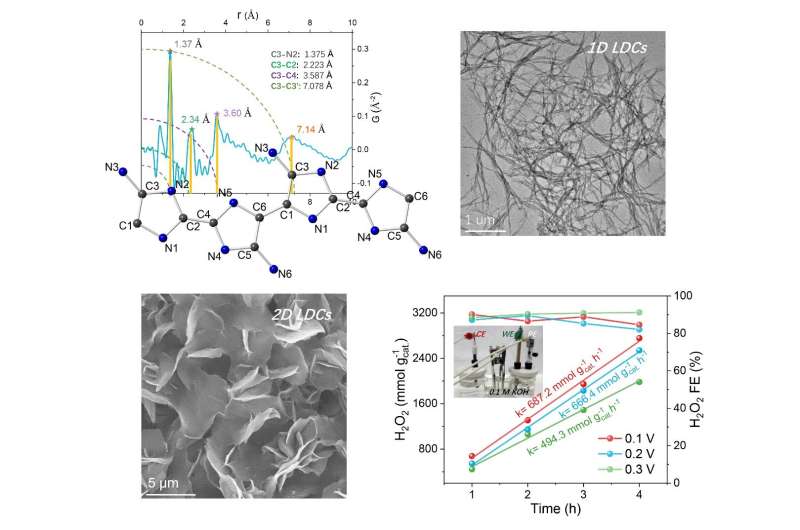This article has been reviewed according to Science X's editorial process and policies. Editors have highlighted the following attributes while ensuring the content's credibility:
fact-checked
proofread
Formamide: A versatile small molecular building block for synthesizing heavily N-doped 1D and 2D carbon

Low-dimensional carbon materials (LDCs), including graphene and carbon nanotubes, have attracted considerable attention due to their unique morphologies and intriguing electrical properties. However, these materials are typically less functionalized for electrochemical applications. Hence, it is crucial to devise a bottom-up synthesis route for LDCs that can enhance their electrochemical properties and establish a structure-performance relationship.
Currently, most bottom-up methods for LDCs synthesis demand expensive precursors and tedious synthesis procedures, thereby severely impeding their electrochemical applications.
In a recent study published in Advanced Powder Materials, a team of Chinese researchers proposed a novel route for constructing 1D/2D carbon nanostructures with tunable aspect ratios and a high nitrogen (N) content, employing a single starting source of small molecule-formamide.
This innovative approach leads to the formation of a specific 1D-type polymerized (HCN)x, known as polyaminoimidazole (PAI). The PAI-based carbon nanostructures grown in a dimensional manner can subsequently undergo carbonization to obtain highly N-doped 1D or 2D carbon structures.
"The synthesis method proposed in this study is highly user-friendly, making it suitable for scaling up in both laboratory and industrial settings," explains one of the study's authors, Guoxin Zhang, a professor in controllable synthesis of carbon nanomaterials at Shandong University of Science and Technology. "The LDCs derived from formamide exhibit an extremely high N content, exceeding 40 atomic percent, as measured after undergoing solvothermal treatment."
Notably, even after annealing at temperatures as high as 900 °C, over 10 atomic percent of N content is retained. "This fascinating finding enables the design of a wide range of electrochemical functionalities for applications in energy storage and catalysis," added Zhang.
The team also made an interesting observation regarding the addition of melamine, a compound with three outwardly extending amino groups, during the solvothermal treatment of formamide. By introducing melamine as a "seed," it has the ability to transform the original 1D growth pattern of formamide into a 2D structure, leading to the formation of thin layers of 2D carbon materials.
The study elucidates that the growth of both 1D and 2D low-dimensional carbon materials (LDCs) follows a specific pathway: (1) dehydration of formamide to HCN molecules, (2) polymerization of HCN into tetramers and subsequent 12-mers (polyamines), (3) decyanation of the 12-mers, and finally (4) intramolecular cyclization.
The precise atomic structure of the LDCs product can be resolved using neutron diffraction technology, allowing the determination of the pair distribution function, as depicted in the graph, which corresponds to the structure of polyaminoimidazole (PAI).
"Until now, it has been challenging to directly grow LDCs with such high nitrogen content at mild temperatures. Our approaches pioneer the controllable synthesis of nanocarbons using small molecular building blocks," said the study's lead author, Zongge Li. "These materials can be effectively employed as electrocatalysts for energy-efficient production of hydrogen peroxide disinfectant."
More information: Zongge Li et al, Anisotropic solution growth of 1D/2D N-rich carbon, Advanced Powder Materials (2023). DOI: 10.1016/j.apmate.2023.100138
Provided by KeAi Communications Co.




















